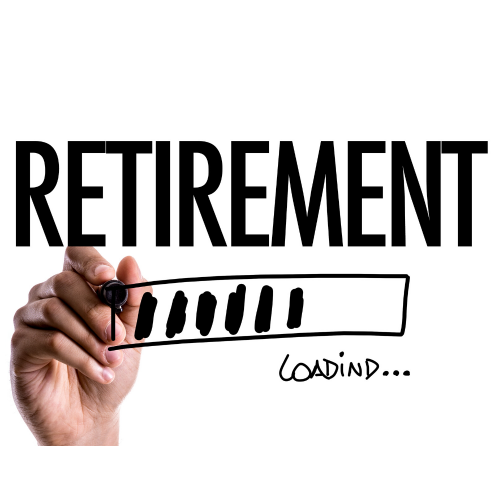Last updated: July 09 2025
Freedom 75? The Case for Raising the Retirement Age

Geoff Currier
The days of financial planners touting Freedom 55 are decades behind us and we are at a point in our history when Financial Freedom in your 70s is more realistic. The retirement age in many countries, including the U.S. has been gradually rising to 67 and by 2040, it will be as high as 70 in Denmark. Should Canada follow suit?
The Backdrop: Since the days following Bismark, developed countries have taken the typical retirement age to be 65. That’s when we say our senior’s benefits (public and private) should begin. The then German Chancellor set the mark at age 70 in 1881 but it was reduced to 65 at the time of the first World War, which was still beyond the typical life expectancy of the era.
When American President Roosevelt enacted retirement benefits as part of his New Deal in 1935, the average life expectancy in the United States was 58. There weren’t enough Americans living beyond 65 to create a burden on the treasury.
Since that time most of the world has used 65 as the age at which one should be able to retire from work life and collect the social benefits which have accrued over that working life. A number of countries set the bar even younger; example Slovakia at 63 years of age. Italy, Australia, The Netherlands, and Iceland have set the retirement age at 67 and the USA and Spain are on their way there. Others like Belgium, Ireland and Sweden are at 66. While it’s true that many nations are at or below or at 65, the trend is clear.
There are two obvious reasons for this trend. The first is that we are living far longer than our grandparents. Life expectancy in most of the world is on the rise. North Americans are living well into their 80’s and enjoy health beyond 65 that was unknown to previous generations. (Yes, there are exceptions but we’re speaking here of the majority). In Canada the life expectancy for someone who has reached age 65 is close to 21 more years, according to Statistics Canada.
In short, we’re increasingly capable of working beyond 65. Many will do it out of necessity.
Not Enough Workers: The second argument for increasing the age at which Canadians should be collecting OAS is all about demographics. According to a 2022 Fraser Institute report “As Canada’s population ages, the number of working-aged Canadians relative to the number of seniors has declined from 5.4 in 2000 to 3.4 in 2022”. By 2050 the ratio could be as low as 2.5 to 1.
In 1970 there were 7.8 workers for each retiree. Successive Canadian governments have failed to deal with the demographic tsunami of the Baby Boomer generation moving into old age. Our social safety net is not sustainable as it stands. There aren’t going to be enough workers to support the retirees. As life expectancy continues to increase it will become ever clearer that those currently in their working lives, will have to continue to work beyond age 65.
If a generally healthy Canadian reaches age 65, there’s a good chance of that individual collecting OAS for twenty years or more. Somebody will have to pay the taxes to make that possible and with fewer workers in relation to those collecting, the future of the program is not good. The challenge for our current and future governments is how heavily they will be able to tax their citizens in order to pay for the social programs which have been promised to us.
There is some good news, however. As the baby boomer generation ages, a larger proportion of the population will be withdrawing from their RRSPs rather than contributing to them. This shift from deductions to withdrawals will lead to a net increase in government revenue from income taxes.
Canada’s Failed Effort on the OAS: Former Prime Minister Stephen Harper proposed that Canada gradually raise its OAS eligibility age to 67 over a period of several years. The proposal fell flat partly thanks to a poor communication strategy and an opposition which twisted the facts to frighten people. (Your 66 year old Aunt Minnie is going to get kicked off OAS). In addition to the postponement of the OAS, there was the option to save up to $10,000 a year in a TFSA under the Harper Plan, but that too was kiboshed. This plan would have enhanced tax free retirement benefits, to take the pressure off the OAS expenditure.
The Bottom Line: In Canada we already place an enormous tax burden on our working population. As tax and financial professionals you witness this burden with every client you serve. How much more is the average Canadian able to pay in taxes and still maintain a reasonable lifestyle?
It’s a long overdue conversation in Canada. The best time for that conversation was 2000. The next best time is today, as you help clients maximize their after-tax income, to channel new dollars into investments that earn the money needed to supplement the big wealth eroders: taxes and inflation.
Check Out Tax Efficient Retirement & Estate Planning!
Instructor-Led Sessions
- New Government Directions: 30 Tax Changes to Expect for 2025
- Retirement Planning: Focus on New Pillars of Planning for a Modern Retirement
- Retirement Income Planning for Small Business Owners
- Post-Mortem Planning: Planning with Bare Trusts
- Post-Mortem Planning: Death in the Family
- The Wrap-Up: Significant Wealth Planning Opportunities from Budget 2025
Advanced Retirement & Estate Planning Update Course
- 30 Tax Changes to Know for 2025
- The Pillars of Retirement Income Planning
- Introduction to Trusts
- The T3 Returns
- Special Trusts

